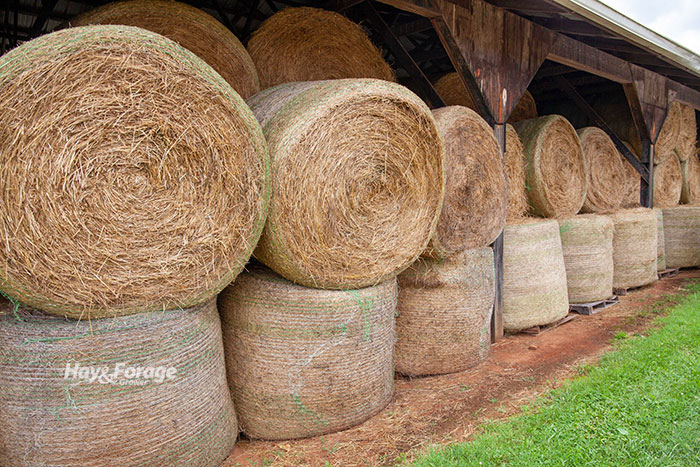
Much of the hay made in the Fescue Belt provides less than the needed quality for many livestock species and classes. This is because Kentucky-31 tall fescue often gets cut too late and has high levels of toxin.
“Kentucky-31 tall fescue can make good-quality hay if it’s cut on a timely basis,” write North Carolina State University’s Matt Poore and the University of Missouri’s Craig Roberts in a recent Alliance for Grassland Renewal’s newsletter.
The two extension specialists note that the levels of toxin in cut Kentucky-31 are reduced in the hay during the curing process. They cite research at the University of Missouri showing that the level of the primary toxin, ergovaline, was reduced by about 30% as it cured during the first three weeks after cutting. After an additional decline during six months of storage, the final total reduction was 50%.
“Toxin levels declined from about 600 parts per billion (ppb) to 300 ppb,” the extension specialists note. “This is good, but toxicosis starts to be noticeable when the ergovaline level is about 100 ppb.”
A better option
Poore and Roberts feel that the release of good novel endophyte tall fescue varieties over the past two decades offers the potential to impact the high-quality hay market in the Fescue Belt. Novel tall fescue produces nontoxic hay and has the ability to persist indefinitely.
“Tall fescue is very responsive to fertilizer applications, but heavy fertilization is not recommended with toxic tall fescue because it increases toxin levels” the specialists explain. “With novel endophyte tall fescue, adequate fertilization will not cause a high level of toxins, so it is ideal for growing high yields of high-quality hay.”
Research at North Carolina State University compared toxic tall fescue hay to novel endophyte or endophyte-free tall fescue hay for growing steers. The novel endophyte and endophyte-free hay had similar nutritional characteristics, and both were superior to the toxic hay, which only had 120 ppb ergovaline. The toxic hay was slightly lower in protein and somewhat higher in fiber, but in vitro digestibility was similar.
The toxin-free hay resulted in a 12% improvement in hay intake. It had a 7% increase in digestibility and a 61% boost in nitrogen retention. Projected average daily gain was 1 pound per day for the toxic hay and 1.6 pounds per day for the nontoxic hay. Poore and Roberts note that farmers have found they can charge a premium over toxic fescue hay.
“Farmers who are in the process of renovation to remove toxic tall fescue from their farms need to purchase hay that doesn’t contain toxic tall fescue seed,” the authors assert. “Many farmers also recognize the improved performance of animals fed this kind of nontoxic hay.”
Potential customers for novel tall fescue hay include farmers who are backgrounding weaned calves, finishing cattle on high-forage diets, or feeding any other high-value livestock.
Horse owners often reject fescue hay, but educational efforts with that audience will continue because of the potential benefit to commercial hay growers in the region. “All of this points to a market for novel endophyte tall fescue hay with almost no current supply,” Poore and Roberts conclude.

